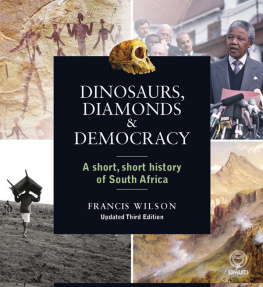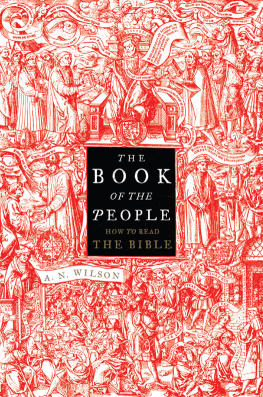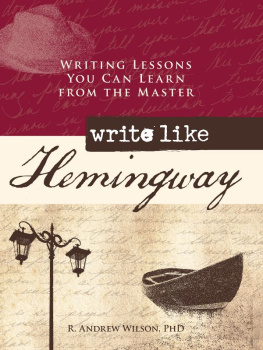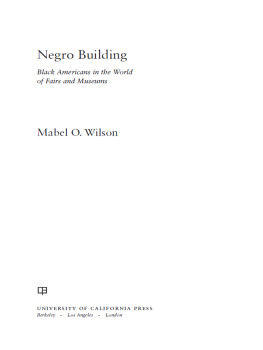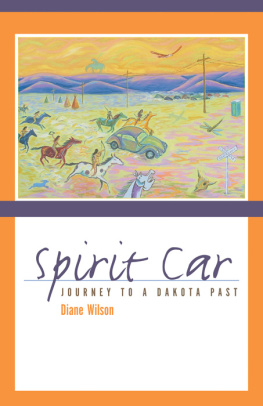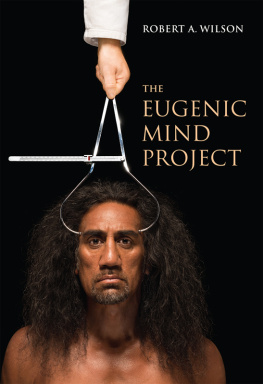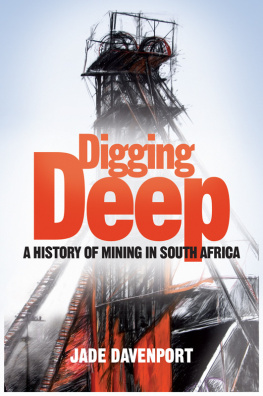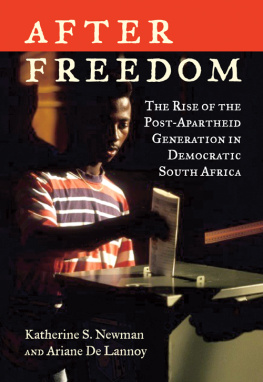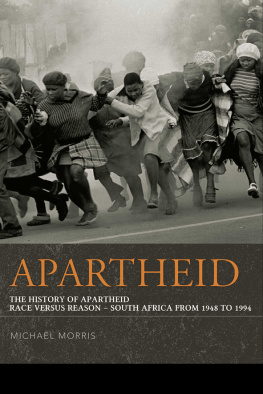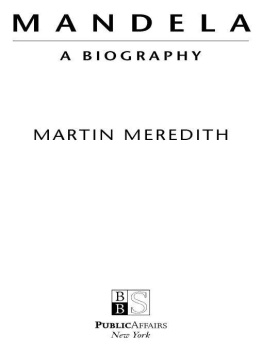I have one question: why didnt they have history books like this when I was at school? Athlone News
A high quality production with sumptuous illustrations and good maps, Dinosaurs, Diamonds and Democracy is sufficiently compact to fit into a coat pocket. It is a remarkable achievement. Cape Times
This brief history of South Africa is a miracle of compression, an accessible and compulsively readable account which spans billions of years of pre-history before taking the story up to the present day. Argus
The perfect companion for South Africans who want to know more about the history of their country. People
From asteroids and fossils to apartheid and the South African miracle, Wilsons concise summary and clear contextualisation bring fresh understanding to troubled times. Getaway
While his book has obviously been meticulously researched, its tone and language make it utterly accessible, without one having the least sense of its having been dumbed down or superficial. Its filled with fascinating historical facts and figures and carefully selected illustrations Dinosaurs, Diamonds and Democracy is an absorbing and edifying read. Sawubona
South Africa has a responsibility to ensure that future generations take full advantage of the lessons of history. Ours is a complex society that needs to take ownership of all our heritage and to learn from the mistakes of our past. This book provides a fun foundation for the discharge of our historic responsibility. Mamphela Ramphele
You cant understand todays South Africa without looking at the entire history of this complex, fascinating country and at the dreams of land and quick riches that have done so much to determine its course. This is a highly readable, quick survey, profusely illustrated, by a distinguished South African economist. Adam Hochschild, Washington Post
I have most definitely never read such a wonderful history of any part of the world The total sweep from the first cell to the cradle of life, the early evidence of hunters and gatherers, the return of Europe through to Black, White and Gold, apartheid and the ending of apartheid. The story is told with such brilliant and mind-blowing perspectives and with admirable brevity The total design is superb. Sir Richard Jolly
This is a book for scientists and non-scientists alike. Read it! Quest

First published in 2009 by Umuzi
an imprint of Penguin Random House South Africa (Pty) Ltd
Company Reg No 1953/000441/07
Estuaries No 4, Oxbow Crescent, Century Avenue,
Century City, 7441, South Africa
PO Box 1144, Cape Town, 8000, South Africa
www.penguinrandomhouse.co.za
2017 Francis Wilson
Francis Wilson has asserted his right to be identified as the author of this work.
All rights reserved.
No part of this book may be reproduced or transmitted in any form or by any means, mechanical or electronic, including photocopying and recording, or be stored in any information storage or retrieval system, without written permission from the publisher.
First edition 2009
Second edition 2010
Third edition 2017
ISBN 978-1-4152-0724-6 (Print)
ISBN 978-1-4152-0937-0 ( PDF )
ISBN 978-1-4152-0955-4 (ePub)
Cover design by mr design
Cover photography by John Hone/Art Publishers,
Gallo Images/ Die Burger and Ben Maclennan
Also available in Afrikaans and isiXhosa.
CONTENTS
For my colleagues and friends in the universities of South Africa from whom, over many years, I have learnt so much not least during the course of writing this book.
&
In memory of Stephen Bantu Biko who loved history, debated it passionately and encouraged me to write more about it.
INTRODUCTION
In South Africa, it has been said, the interpretation of history is even more controversial than the analysis of the present. Be that as it may, what is certainly true is that the understanding of even the remote past changes with astonishing speed. In the few months that elapsed between the release of the first edition of this book in October 2009 and the second edition in 2010, the results of major discoveries were published in scientific journals which added significantly to our knowledge of not only the world of dinosaurs, but also the evolution of humanity itself. And in the six years since then even more of our past has been uncovered. A new dinosaur, new hominins, new evidence of tools made by ancestors of Homo sapiens and of symbolic thinking by human beings before they ever moved out of Africa: all bear testimony to the excitement of history in South Africa today, as do more recent interpretations of the movement and activities of people before Europe ever penetrated the subcontinent.
It is perhaps foolish to try to encapsulate in so short a book a history which stretches back to the beginning of life itself. A brief text can, however, provide an illuminating overview for the visitor to South Africa, as well as for those South Africans without the time or means to read more deeply. It can also serve as a stimulus for those who wish to study further, using one or more of the many excellent single- or multi-volume histories of the country.
To many people South Africa is known chiefly for its beautiful landscapes, its wild animals, its gold mines and for the oppression of apartheid. But there is far more to the country than that. The Cradle of Humankind, a World Heritage Site outside Johannesburg, bears testimony to the importance of South Africa in the evolution of human beings. The subsequent immigration of people over the past 2 000 years or more created a melting pot in which the central theme, as has been argued in The Oxford History of South Africa , is interaction between peoples of diverse origins, languages, technologies, ideologies and social systems meeting on South African soil. The discovery of all kinds of minerals over the past century and a half has turned the country into the jewellery box of the world. And the political transition, led by Nelson Mandela, from a racist state to a modern democracy aroused admiration around the globe: an admiration somewhat tempered, though, by current political turbulence, widening inequality and concerns about the countrys future.
Undoubtedly, there will be critics of such a concise work, especially when the subject is as unresolved and controversial as the history of South Africa. Were the Dutch and the English who came to South Africa in the 17th and 19th centuries settlers or invaders? What of the Bantu-speaking iron and pottery workers from the north, who crossed the Limpopo River into the land of the San and the Khoe between 2 000 and 1 500 years ago? When and from where did the Khoe, pastoral people, acquire their sheep and cattle? Even the palaeontological history, going back hundreds of thousands of years, has been evolving rapidly in recent decades and many crucial questions are far from settled. In our own day, there are very different perspectives on the relations between black and white and on the role of different political groups within the liberation movement.
It is not possible to include in a book of this nature enough to satisfy all of its readers. If it does no more than whet the appetites of the curious, so that they catch a glimpse of just how fascinating the history of South Africa is, no matter how recent, nor how far back one goes, then it will have done its job. But if it can also help to facilitate, in some small way, greater consciousness about our common history and also encourage further debate about controversial aspects of the past, then it will indeed have achieved all that can be hoped for. For those who wish to read more, a list of further reading has been prepared online at https://sites.google.com/site/francisaylmerwilson, where detailed endnotes on sources may also be found.
Next page
